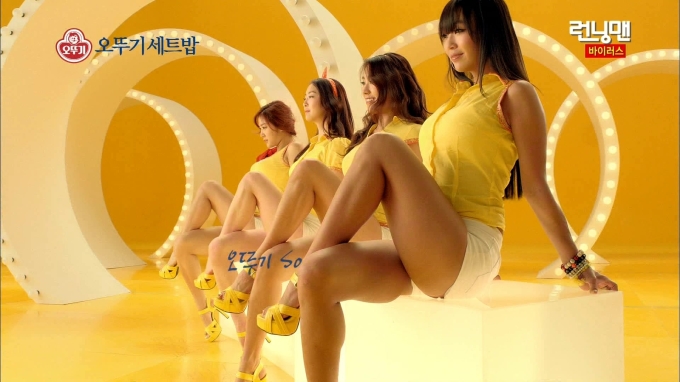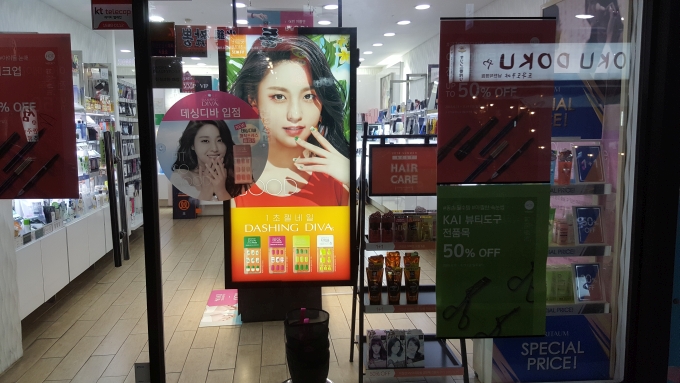Compared to men, women are almost 60 times more likely to be wearing revealing clothing in Korean advertisements.
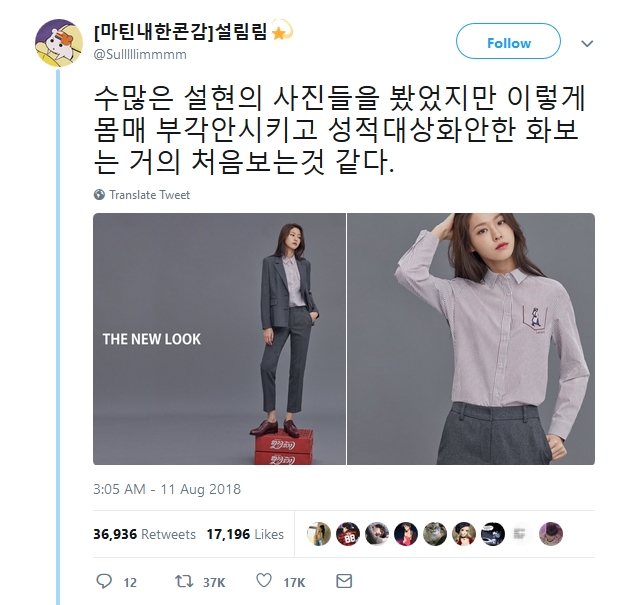 Estimated Reading Time: 5 minutes. Source: @Sulllllimmmm
Estimated Reading Time: 5 minutes. Source: @Sulllllimmmm
“I’ve seen many pictures of Seol-hyun, but I think these are the first ones I’ve ever seen that haven’t sexualized her or shown off her body.”
Me too.* Which is not to say I’m against either, of any consenting adult. Sometimes, a famous figure in tight-clothes is just what is needed to grab your attention, whatever your sex or sexuality. Especially in a commercial’s all too brief 15-second window:
But that one by Hani for Yanolja, a motel-finding app, was only successful—10 million downloads, in a population of 51 million—because it combined its celebrity face and sexual frisson with such a catchy jingle and distinctive dance. Imitated and parodied by Korean fans all summer (especially my daughters), who demanded Hani perform it on the street, in hindsight it was an obvious winner.
Or was it? Compare this 2013 commercial by Sistar for Ottogi set rice meals, which I used in a recent lecture I gave to The 11th Korea-America Student Conference. Mostly, because the incongruity of all the flesh with the actual, rather mundane product is just so jarring: were all those legs really needed, and those belonging to an expensive girl-group in particular? Also, because I couldn’t find a single news article about it from 5 years ago, in contrast to all the attention Hani’s commercial is getting today:
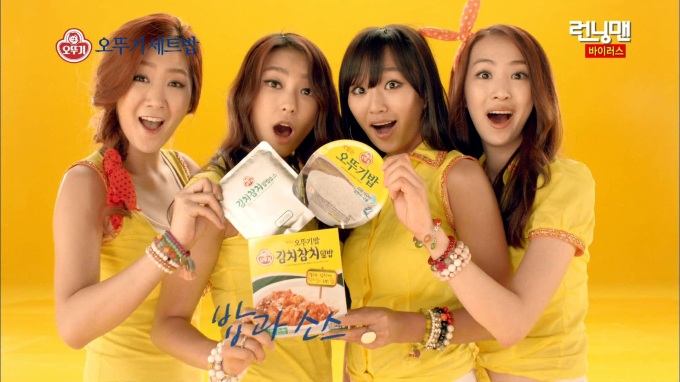 Sources: *cough* Ilbe
Sources: *cough* Ilbe
But after the presentation, thinking again about the commercial got me hot and bothered, and not in a good way. I realized my making the point with the screenshots had overshadowed the commercial itself, which I hadn’t actually seen in many years. Once I did, I realized it did have its own jingle and dance, and a sort-of chorus-girl concept which the hot pants weren’t necessarily out of place in:
Sure, neither the jingle nor dance are quite as distinctive as Hani’s, but they’re there. So, without that hindsight, who’s to say that this commercial would flop, whereas Hani’s would be a guaranteed success?
Especially as it didn’t flop, damnit. As a renewed search revealed:
또 주요 소비자층인 20~30대 남성이 선호하는 걸 그룹 ‘씨스타’를 활용한 프로모션을 전개하면서 지난해 세트밥 매출을 2012년 대비 95% 늘렸다.
“Compared to 2012, Otoggi’s promotion with the girl-group ‘Sistar’ in 2013 led to an increase of 95% in sales among the major consumer group of men in their 20s and 30s.”
The Korea Economic Daily, 5 March 2014
Well duh, although I like to think more men need more than just legs to be sold on a meal (thinking we would be is still kinda patronizing, TBH). And my next reaction was that what worked for young men in this case didn’t necessarily speak for other demographics, Korea’s brutal M-curve meaning it’s housewives that do the food shopping for most households. But with Korea’s rapidly-rising single household rate, that’s probably not the case for these convenience meals in particular. Hence:
오뚜기는 편의점 유통 물량을 늘리는 한편 자사 페이스북에서 다양한 이벤트를 진행해 소비자와의 소통을 강화했다. 이런 노력에 힘입어 오뚜기밥 전체 매출은 전년 대비 50% 이상 증가했다.
“Ottogi’s strategy of increasing sales volumes at convenience stores and strengthening its communication with consumers, such as by hosting events on Facebook, has led to its rice sales increasing over 50% compared to the previous year.”
So, my path for future lectures was now clear: to seek out new commercials and new girl-groups in hot pants, to boldly question if they really do work, where no one has questioned before. And to seek out successful Korean femvertising, or just simply those successful commercials by women wearing actual clothes. Because in the revised version of my lecture, the final slide will continue to feature the following troubling fact about Korean life, which has my daughters increasingly running for the scales rather than happily dancing being kids. I wish I was joking:
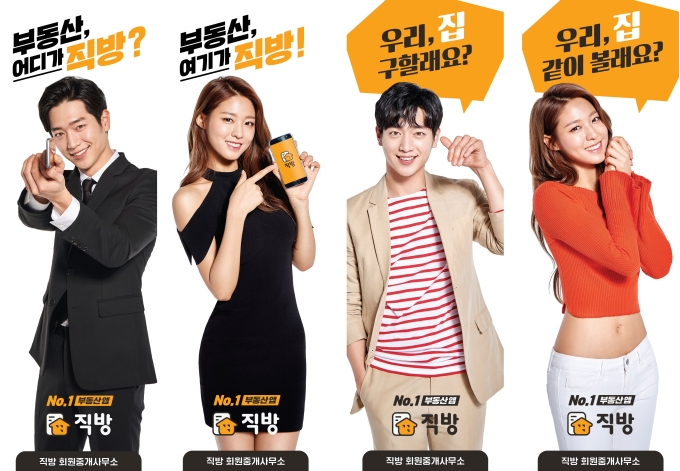 Source: News Tomato
Source: News Tomato
“Females were 5.9 times more likely than males to not be fully dressed (vs. fully dressed) in Hong Kong advertisements, whereas females were 22.89 times more likely than males to not be fully dressed in Japanese ads and 56.83 times more likely than males to not be fully dressed in South Korean ads.”
Prieler, M., Ivanov, A. & Hagiwara, S. (2015). Gender representations in East Asian advertising: Hong Kong, Japan and South Korea. Communication & Society 28(1), 27-41, p. 34.
Please let me know of any examples in the comments, of either the good or the bad, and your thoughts of any of the above :)
*On the theme of shattering convenient narratives, I noticed an ad featuring a fully-clothed Seol-hyun on the same day I noticed the tweet:
Fortunately for my paranoia about conspiracies to undermine my lectures though, Seol-hyun’s ads for Dashing Diva nails do follow a predictable pattern. Er…Yay?
(0:14)
Related Posts:
- Korean Lolita Nationalism: It’s a thing, and this is how it works
- Why Korea Has so Many Celebrity Endorsements, and Why That’s so Important for Understanding Korean Pop-Culture
- No Skin Required: Healthy Images of Couples in the Korean Media
- Korean Sociological Image #86: Sex and the Single Korean (Household)
- Korean Sociological Image #22: Fresh, Young Meat
- Korean Sociological Image #70: “The Healthy
Man-MeatHam” - Korean Sociological Image #91: Shameless Hussy Corrupts Korean Youth
- Sex, Self-Confidence, and Social Activism: When Women Made Soju Ads
If you reside in South Korea, you can donate via wire transfer: Turnbull James Edward (Kookmin Bank/국민은행, 563401-01-214324)

